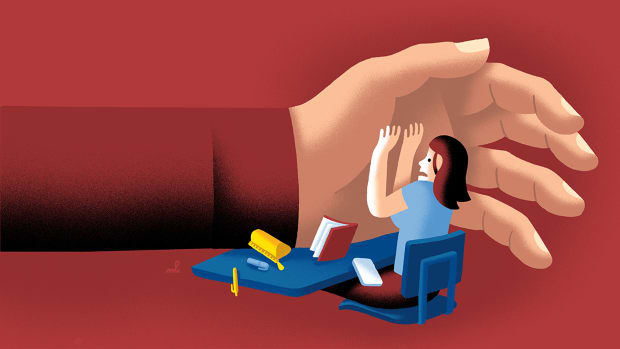
A class is a place to practice socially unsafe situations
The UvA believes a positive study climate which students feel safe is important, but does an instructor exhibit unsafe behavior when he simply asks students a question? Professor Bas van den Putte doesn't think so. But his students think otherwise. How empathetic do you have to be, Van den Putte wonders.
Bullying, discrimination, and mental and physical aggression are not acceptable. There is a responsibility on everyone’s part to intervene in socially unsafe situations. But what is a socially unsafe situation? To help me with this, I was provided with clearly worded instructions: “The person’s experience of insecurity is the starting point, not just a situation or behavior that is objectively and universally perceived as transgressive.” That sounds good on paper, but it also raises new questions and dilemmas. To what extent should you always go along with another person's feelings?
Asking is allowed--or not
Let me be clear. I, like many of my colleagues, regularly receive complaints from students that they feel unsafe during class because I ask them a question, such as about something they had to read beforehand, about their thoughts on a phenomenon discussed in class, or what they think of another student’s answer or opinion. This is not what these students want. They report that it causes them to feel stressed in class, to be unable to concentrate properly and to experience teaching as unpleasant and unsafe. They feel they have a right to not actively participate in class. In student evaluations, students sometimes express this criticism in harsh terms. They believe it means that the teacher is creating an unsafe climate and is totally unfit to teach. Awareness of the feelings of the teacher reading this criticism seems to be somewhat less in focus here.
Participation comes from two sides
How should I handle this? Should I allow only those students to participate who ask for the floor themselves? Or give each student a small card with green and red sides that they can use to indicate whether or not they want to participate? And then just hope that the students with red cards don’t use the class time to study what’s on sale at Zalando’s, as I have also experienced. This student was angry that I said something about it during class because it is considered unsafe to address someone regarding undesirable behavior during class. Another dilemma.
In didactic courses, you also learn threshold-reducing tricks, such as giving students two minutes to write down an answer first or having students in separate groups confer first. But am I preparing students adequately for real life? In their later professional life, would their supervisor say at every meeting: “You have read the documents, then we will take five minutes so that you can write down for yourselves what you would like to say, and then I will ask who wants to share it with the group. You don’t have to worry if you are just sitting in this meeting to hear what others think. That’s okay, too.” Or “You have just heard the opinion of x, talk to the person sitting next to you about what you think about this and then we will come back to the plenary session.”
Angry outside world
Needless to say, I have little use for this. I am the type of teacher who constantly asks questions of random students, and - fair is fair - preferably those students who don’t seem to be paying much attention. What’s on sale at Zalando is not one of my teaching goals. I don’t think that will make me popular, but that’s not my goal, either. I do hope that more students prepare better and think more actively. Preparation for a professional life as a higher educated person also includes, as far as I am concerned, learning skills such as functioning in meetings in which your opinion or knowledge is asked for at any time and learning to give reasoned, well-founded responses to the opinions of others. The angry outside world is full of such socially unsafe situations in which you may feel uncomfortable, but which you must manage. A class is a place to practice and gain experience with this. Yes, this can be scary, very scary, but especially for students who feel this way, it is good to gain this experience.
Creating unsafe situations
A recent publication by Yeager et al in Nature shows that students learn to cope better with stress when they learn in an online intervention of only 30 minutes that stress is not bad, and that short-term, situation-related stress can actually be positive. It can put you on edge, help you focus more and therefore perform better.
A remarkable side effect published by Von Dawans et al. is that it can also make people more social. Therefore, a relevant teaching goal is to teach students how to cope with stress by confronting them with it regularly. A good teacher creates uncertain situations that create stress. We shouldn’t turn students into cash crops.
Bas van den Putte is full professor of Health Communication and director of the College of Communication

